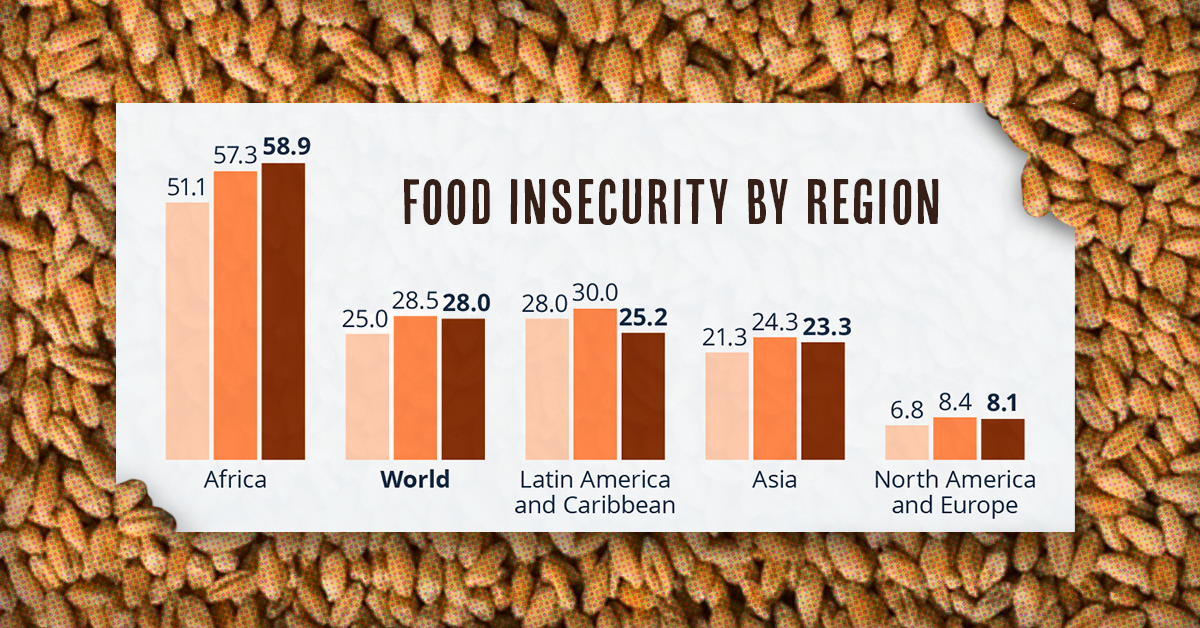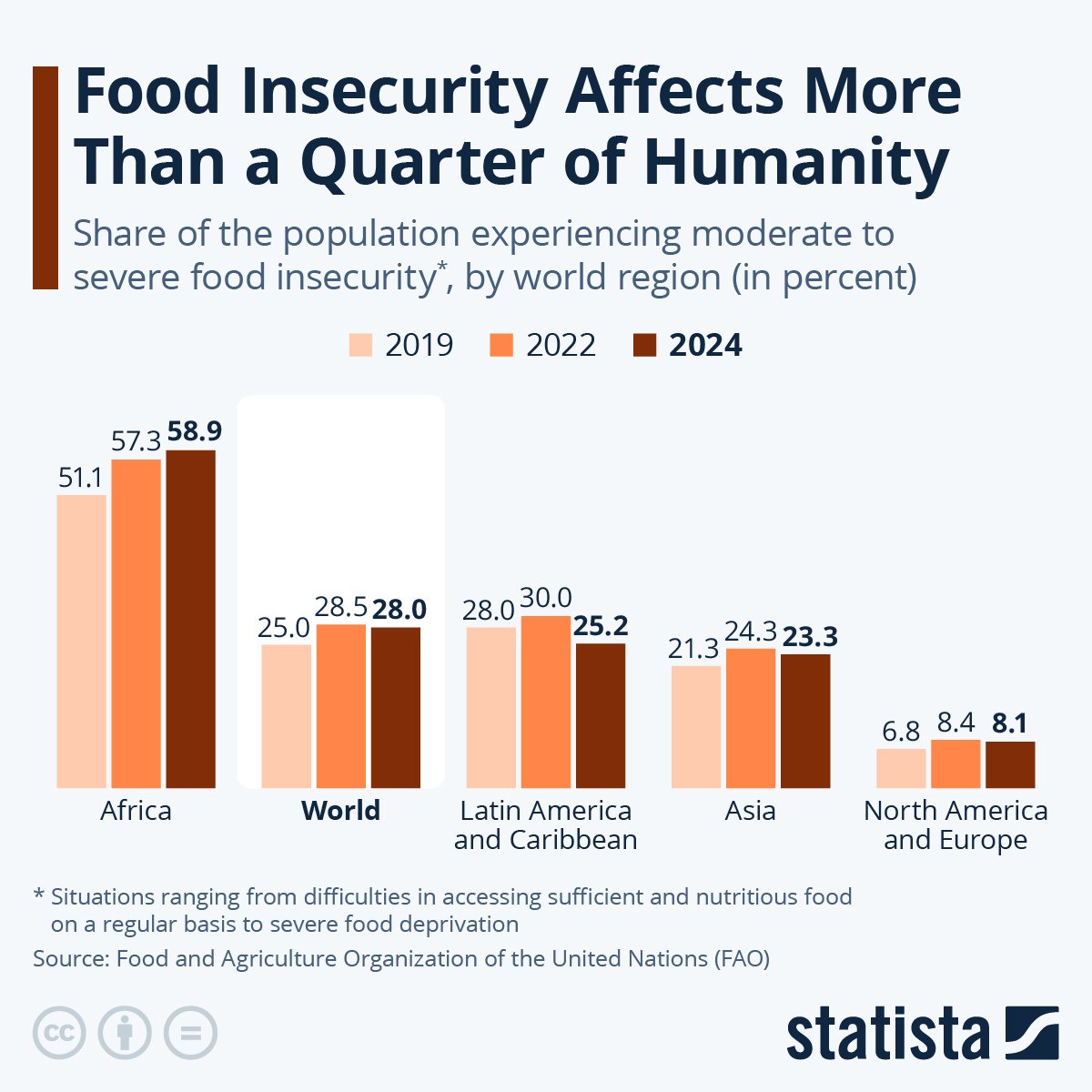 See this visualization first on the Voronoi app.
See this visualization first on the Voronoi app.
A Quarter of Humanity Still Faces Food Insecurity
This was originally posted on our Voronoi app. Download the app for free on iOS or Android and discover incredible data‑driven charts from a variety of trusted sources.
- 2.3 billion people—28% of humanity—were food‑insecure in 2024 according to the UN’s Food and Agriculture Organization (FAO).
- Africa remains the hardest‑hit region, with nearly 6 in 10 residents lacking reliable access to nutritious food.
- Conflict, climate shocks, and economic turbulence increasingly reinforce each other, creating a “perfect storm” for hunger in many countries.
Even as global agricultural output reaches record highs, hunger remains a daily reality for billions.
New data from the FAO, visualized by Statista above, shows that nearly one in four people still experience food insecurity, driven by conflict, climate extremes, and rising local prices.
| Region | Food insecurity (2019) | Food insecurity (2022) | Food insecurity (2024) |
|---|---|---|---|
| Africa | 51% | 57% | 59% |
| World | 25% | 29% | 28% |
| Latin America and Caribbean | 28% | 30% | 25% |
| Asia | 21% | 24% | 23% |
| North America and Europe | 7% | 8% | 8% |
When the data is broken down by region, two patterns jump out immediately: Africa’s rate has climbed to a staggering 59%, and the global figure is still higher than before COVID‑19.
What Does “Food Insecurity” Actually Mean?
The Food Insecurity Experience Scale (FIES) asks eight yes‑or‑no questions ranging from “Were you worried you would run out of food?” to “Did you go without eating for a whole day?”
Moderate insecurity signals a diet of poor quality and occasional quantity cuts, while severe insecurity means entire days without food. In 2024, the FAO estimates 900 million people fell into that latter, most extreme category.
Why Are Some Regions Falling Behind?
According to the Global Report on Food Crises, conflict remains the single biggest driver, from Gaza to the Sahel. Climate‑related droughts and floods compound the problem, destroying harvests and livestock.
Meanwhile, a World Bank 2025 update highlights stubbornly high domestic food‑price inflation, even as global commodity prices ease—especially in countries with weak transport infrastructure.
The Triple‑Threat Economics of Hunger
Corruption diverts aid, climate extremes slash yields, and currency shocks make imports unaffordable. In short, the forces behind food insecurity interlock. Tackling them will require an equally integrated response: early‑warning systems, resilient infrastructure, and smarter food supply chains that waste less and move faster.
Until those levers are pulled, the FAO warns the world is not on track to meet SDG 2 (Zero Hunger) by 2030. The challenge is vast, but so is the payoff: a healthier, more stable global population.
Learn More on the Voronoi App 
See which countries are the most food self-sufficient in this detailed visual ranking.
















